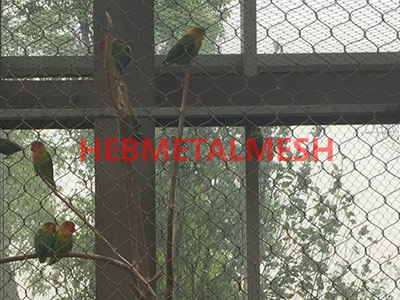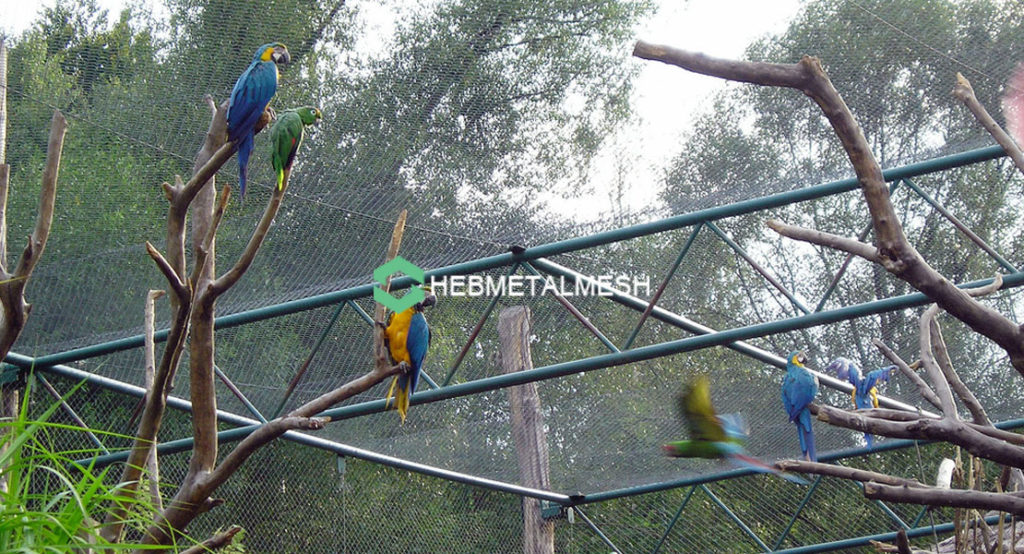Bird infestation in homes and commercial buildings can cause significant damage to property, health hazards, and even legal liability in some cases. Birds, their nests, feces, and feathers can damage building structures, create unsanitary conditions, and spread disease. Therefore, effective bird control measures are necessary to prevent or reduce bird infestation and its negative impacts. One of the most efficient bird control solutions is installing bird screen wire mesh, which is customizable to fit various properties and bird species.

What is bird screen wire mesh?
Bird screen wire mesh, also known as bird netting, is a specialized type of metal wire mesh or plastic netting that creates a barrier between the birds and the areas they target. The mesh is designed to keep birds from entering or perching on specific places, such as roofs, eaves, chimneys, gutters, balconies, and patios. The mesh works by blocking the birds’ access to these areas, denying them the opportunity to build nests, roost, and seek shelter.
How does bird netting work?
Bird screen wire mesh works by using the principle of visual and physical barriers to deter birds from infesting a property. The mesh creates a visual blockage that confuses birds and prevents them from recognizing the target areas. Additionally, the mesh creates a physical barrier that birds cannot easily penetrate or damage. The mesh’s holes are too small for birds to pass through, and the wires or threads are too rigid or slick for birds to grip or damage.
Customizing bird wire mesh for your property
Bird screen wire mesh comes in different sizes, shapes, materials, and configurations to fit various properties and bird species. It is essential to consult with professional bird control experts to determine the most appropriate bird etting for your property and bird infestation scenario. The experts can help you customize the mesh’s specifications, including the mesh size, wire thickness, thread count, color, and installation accessories.
The mesh size determines the size of the holes on the mesh, which should be small enough to prevent birds from passing through. The wire thickness determines the strength and durability of the mesh, which should withstand external factors such as wind and weather. The thread count determines the mesh’s density and visibility, which should be high enough to create a visual barrier while still allowing light and air to pass through. The color of the mesh can be customized to blend with the building’s aesthetic or serve as a visual warning for birds.
Bird screen wire mesh installation
Bird screen wire mesh installation is a specialized task that requires professional skills, equipment, and safety measures. The installation process involves assessing the target areas, measuring the mesh size, trimming the mesh to fit, securing the mesh with fasteners or clips, and sealing the edges to prevent birds from slipping in. The installation should also consider the potential risks, such as injury, property damage, or bird entrapment, and avoid creating new problems while solving existing ones.
Benefits of bird wire mesh
Installing bird screen wire mesh offers several benefits for effective bird control and property protection. Some of the benefits include:
- Preventing bird infestation and damage to structures, equipment, and products.
- Reducing health hazards and overall maintenance costs by eliminating bird droppings, feathers, and nesting materials.
- Improving the building’s aesthetic and hygiene by creating a cleaner and safer environment.
- Enhancing the building’s value and reputation by complying with legal and ethical standards for bird control.
Conclusion
Bird screen wire mesh is an efficient and customizable bird control solution for preventing or reducing bird infestation and damage to properties. Installing bird screen wire mesh requires professional expertise and consideration of various factors, such as the mesh size, wire thickness, thread count, color, and installation accessories. By installing bird screen wire mesh, you can protect your property from bird infestation, reduce health hazards and maintenance costs, improve your building’s value and reputation, and create a cleaner and safer environment.


